— By Brett Andersen —
How to transform your dining experience through architectural lighting design.
Lighting can transform a diner’s evening. A restaurant’s lighting should be functional while also providing the right ambiance. Hiring a professional lighting designer ensures a cohesive approach that balances aesthetics and technical considerations, including LED technology and control systems. To better understand what makes for a successful design, our firm conducted a study of the top 50 restaurants in New York City and came up with the following expert tips so you, too, can use lighting to craft a dining experience that keeps guests coming back for more.
Make a Great First Impression
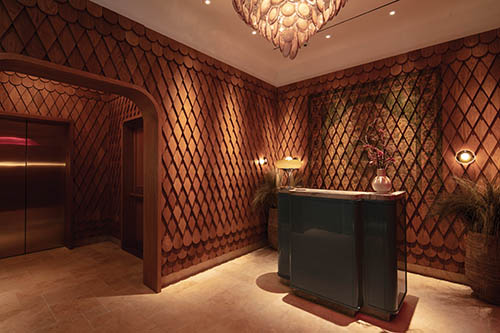
A diner’s experience begins before they ever enter the restaurant. This is the most influential moment for guests, because they are open to and expecting a great experience. Well-lit signage — whether it’s neon or a marquee highlighted by accent lighting — piques curiosity and reinforces brand identity. A seamless transition from storefront to table relies on the appearance of the host stand, which should act as a focal point, establishing a destination and preventing disorientation from entering a new space. Make your host look beautiful with soft ambient light that could come from a table lamp or chandelier. An intentionally aimed downlight can provide additional illumination.
Avoid the Infamous Phone Flashlight
Guests should never have to pull out phone flashlights to read their menus. Nearby diners are inconvenienced, and bright cones of light disrupt the mood. We have found that a perfect accent light is focused on the center of the table, with a wide enough beam that ends right at the middle of plates, allowing enough light to fall onto menus and food without hitting guests with harsh light across their faces, even when they lean in.
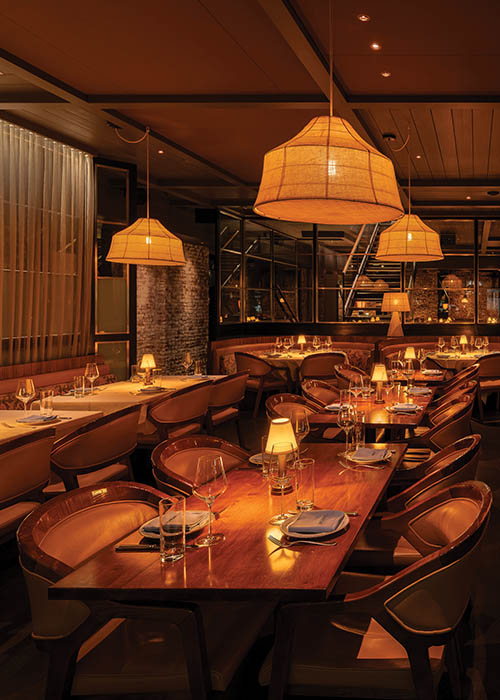
However, relying exclusively on overhead lights will make a dining room appear flat. By layering lighting treatments, you create visual interest while providing ample ambient lighting. Accompany overhead lighting with other layers of light like a linear detail behind booths that grazes light up the wall, adjustable fixtures aimed at art that allows for flexibility when choosing a piece, and decorative fixtures like wall sconces or hanging pendants. Be wary when choosing decorative fixtures, though: instead of choosing options with integral LEDs, which don’t allow for customization, screw-in bases allow you to test fixtures on your dimming system, and change bulbs out if the color isn’t right or if they flicker when dimming. Thoughtful layering of light sources enriches the composition of the dining space, accentuating individual design details.
Consider the Table-Scape
You may not realize it, but table settings can play a huge role in the success of a restaurant. Light-colored tablecloths and dishware reflect light, subtly illuminating guests’ faces, whereas darker surfaces absorb light and may require additional lighting. Try testing various shades and colors of both tablecloth and plates to find the right amount of reflection needed at the table. These days, battery-operated table lamps are available and can help in creating the right balance of light. It’s important to test samples of these table lamps before buying them for your entire restaurant to verify that they work for you operationally. Is the color flattering on faces and table linens? Does the base fit on the table when plates are laid out? You will likely change the brightness with the rest of lighting throughout the evening; how easy is it to adjust levels? Candles are another alternative, providing a gentle flicker that can fill in shadows. The brightest options are wax taper candles and liquid paraffin lamps.
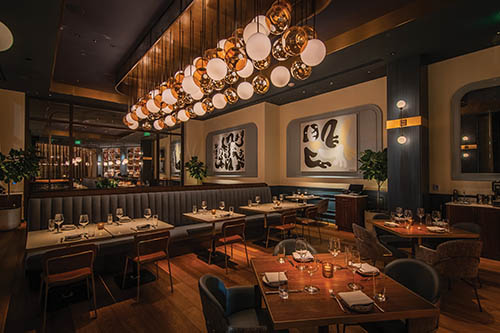
Extend the Vibe Outdoors
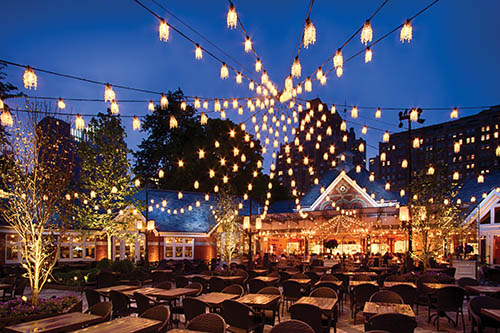
The patio should feel like an extension of your restaurant’s interior. Apply the same lighting principles outdoors, creating a cohesive experience for all guests, as well as providing a magical view for those seated indoors. In the absence of overhead lighting, look for other opportunities to layer light; string lights are a familiar option that come in a variety of bulb shapes. Lanterns can be strung up for a diffused, soft glow. Planter lights make your greenery pop while adding ambient light. Battery-operated table lamps can also be useful here.
Finalize Your Lighting with Testing and Controls
The final step to balance the light in your restaurant is to compose an image with the brightness of each light source. Set up tables for service and invite another pair of eyes. Together you can test levels by holding menus and setting out plates of food, mimicking what guests will really experience. Once you have refined your composition, a control system is the only way to save and consistently replicate these tailored settings.
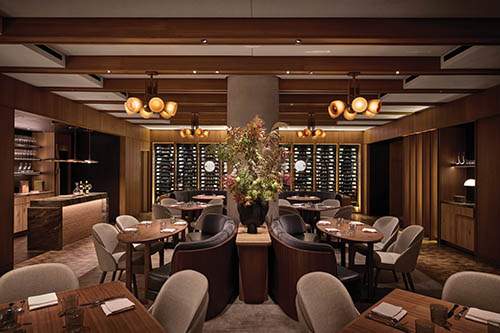
Dimming lighting manually relies on management or servers to slowly and carefully adjust dimming switches multiple times throughout the evening, so attention is not drawn to the changing light. This may save some money, but investing in a control system provides benefits that far outweigh the cost. Control systems come in a wide range of capabilities and pricing, so choose whatever option your budget allows for with features that fit your restaurant’s needs.
Make the Restrooms Memorable
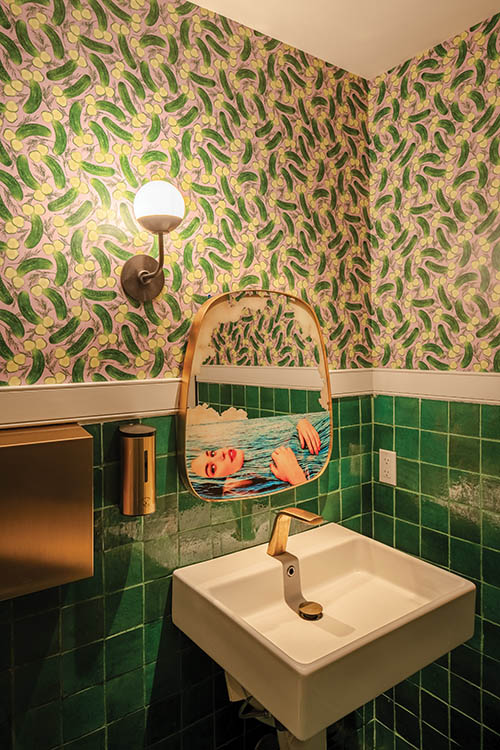
After a meal, your guests will head to the restroom, which can be the final impression of the evening. Don’t miss this last opportunity to impress! Do something memorable with the design. Have fun! In addition to recessed lighting, mix things up with a pop of colored light, or a playful piece of neon. Just make sure there’s enough light to make the guests look great when they look in the mirror, and to make restroom fixtures appear clean. In combination with a funky wallpaper and sleek hardware, the bathroom is sure to dazzle guests before they head out.
Don’t let all the hard work you put into your restaurant be overshadowed. Good lighting may be easy to miss, but bad lighting will be the first thing you notice. By incorporating some of these recommendations, you’ll be well on the way to creating a memorable night for your guests that they will be thrilled to experience again.
— Brett Andersen is partner and principal of Focus Lighting, an architectural lighting design firm based in New York City. Visit www.focuslighting.com.

